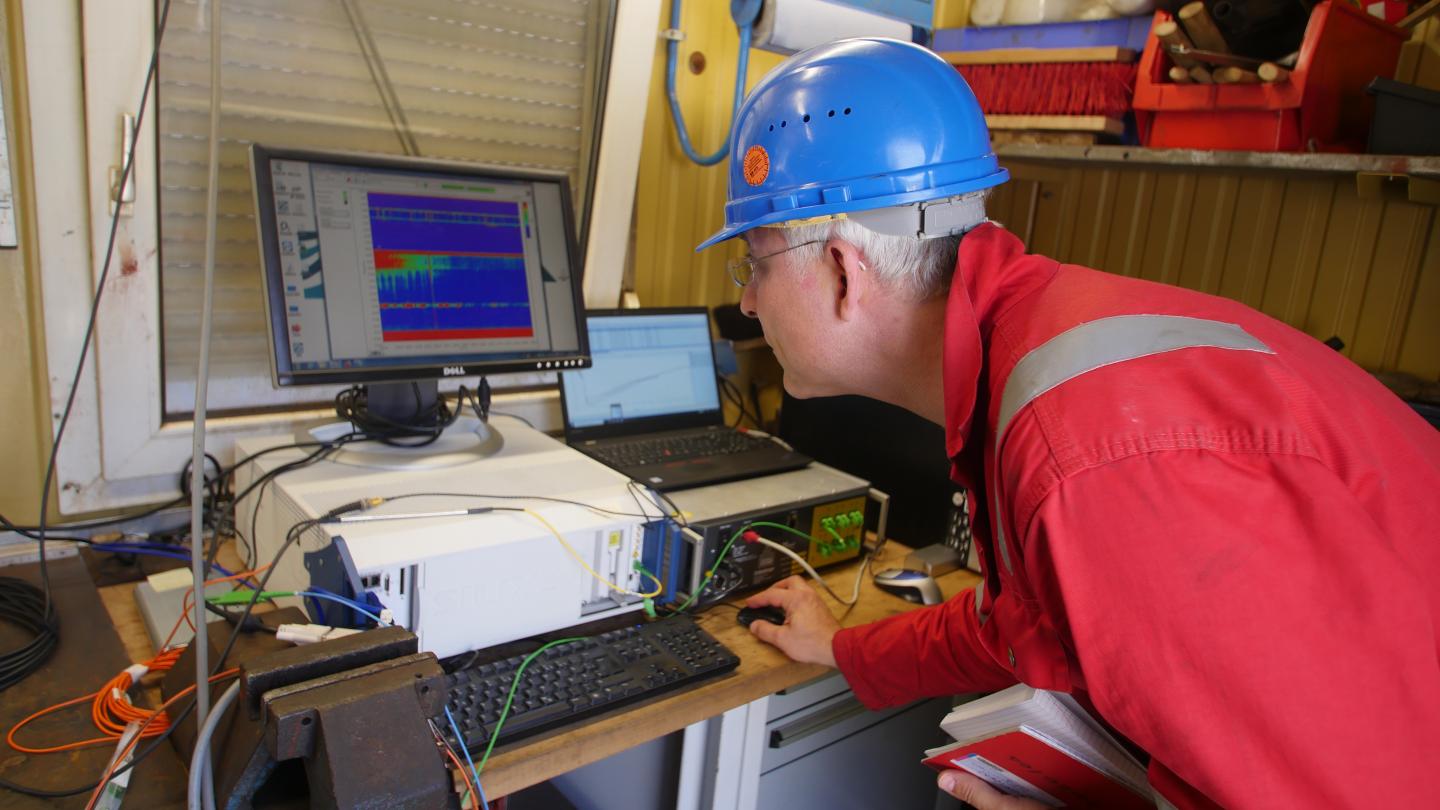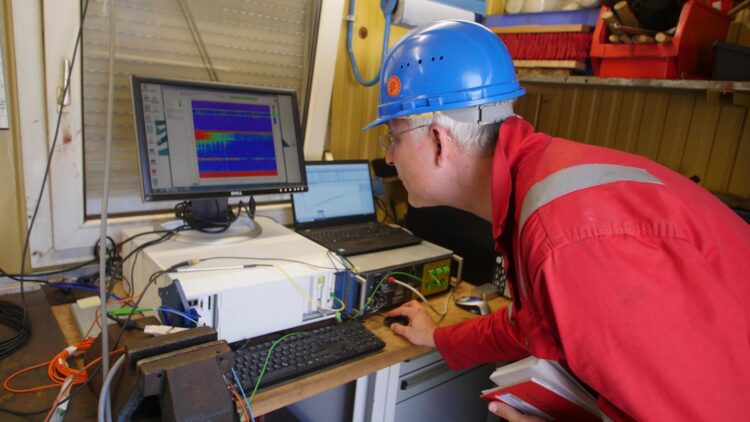The ATES iQ project aims to demonstrate whether the carbonate rocks 500 meters below Berlin are suitable for heating buildings

Credit: CCBY-SA 4.0 Daniel Acksel, GFZ
In 2017 a huge storage facility in the pores of a sandstone layer at a depth of between 1015 and 1045 meters below Berlin’s Grunewald forest that had been used to temporarily store natural gas, to cover the city’s fluctuating needs, was shut down.
For researchers of the working group, led by Guido Blöcher, at the GFZ German Research Centre for Geosciences in Potsdam and, likewise, for his project partners from the Berliner Erdgasspeicher GmbH (BES), the decommissioning of this facility from the fossil age offers a unique opportunity to explore a sustainable, regional energy source. The scientists plan to investigate whether the layer of the Muschelkalk formation (a shell-bearing limestone) 500 metres above the natural gas storage facility, no longer in operation, could be exploited to supply geothermal energy for buildings, not only in the metropolis but also perhaps in the booming and equally “energy-hungry” surrounding areas.
The researchers are primarily interested in two layers within the Muschelkalk, each comprising a 15-meter thick layer of foam limestone with a high number of pores. This rock actually resembles very hard foam that developed in primeval times when a limestone shell slowly formed around small grains of sand or the remains of seashells at the bottom of a shallow sea. Large quantities of water which normally would flow along crevasses in the rock are captured in the pores of this foam limestone. As the Muschelkalk together with the trapped water at a depth of between 500 and 550 metres beneath Berlin’s Grunewald Forest should be about 32°C, it could be an option to use this resource as a source of geothermal energy. Furthermore, it would also be possible to use this foam limestone to store superfluous heat during the summer months for the winter.
The extent to which such a layer of rock can be used depends crucially on how much water is contained in the carbonate rock of the foam limestone and what quantities can flow through the naturally formed fissures at depth. “To find this out, you would normally have to drill right into the foam limestone”, explains Guido Blöcher. However, that is an expensive undertaking. It is much cheaper to use the wells already drilled for the gas storage facility. Therefore, this is exactly what the GFZ researchers are now doing. Through these boreholes water samples from the Muschelkalk are recovered to the surface. Hydrochemist Simona Regenspurg and her research group are studying the substances present in these water samples to find out where the water comes from and how it could be used. “What are the actual quantities of salt and other substances dissolved in the water?” is the question posed by the GFZ researcher.
Simona Regenspurg is interested in the salts as they could precipitate and, thus, impede the technical processes involved in using geothermal energy. If the quantities and composition of these salts are known, the engineers will also be better able to prevent corrosion at a later stage. In addition, within the framework of a new GFZ research focus on life in the depths, geomicrobiologist Jens Kallmeyer is analysing which microorganisms are contained in the water and how their activities influence the subsurface.
In order to estimate the amount of water flowing from the crevices in the foam limestone, the researchers have planned various testing methods. The “lift test”, as one of these methods is jokingly called, involves pumping nitrogen into the borehole. This causes the water to “shoot up” out of the borehole where it is then possible to measure how many cubic meters of water can be recovered from the hole in an hour. Another method uses nitrogen to push the water in the borehole down about a further one hundred meters. Via a valve at the surface the pressurized nitrogen is then very quickly released and the water rises back up the borehole. “From this re-rise, it is possible to calculate the amount of water that can later be pumped within one hour,” explains Guido Blöcher. Based on these quantities the BES can, thus, estimate whether the use of geothermal energy would actually pay off at this location.
Engineers and technicians, led by GFZ researcher Jan Henninges, will insert a measuring cable down to a depth of 550 metres that uses optical fibres to measure the temperature along the entire length of the borehole simultaneously. When, as planned for this experiment, the extracted 100 cubic metres of water from the Muschelkalk, which has cooled at the surface, is again pumped back into the borehole to restore the original state the temperature curve shall be carefully monitored. If the borehole remains cold for a long time at one place, water has obviously penetrated into the surrounding area. “In this way we can see where permeable rock layers are located along the borehole,” explains Jan Henninges. And already the BES researchers are presenting further key information as to how the old boreholes of the natural gas storage facility could be later used for geothermal energy. The aim of researchers at the GFZ is to apply these concepts tested in Grunewald and the results obtained there to the surrounding area of Berlin, where a layer of Muschelkalk could also enable the development of geothermal energy.
###
Scientific contact:
Dr.-Ing. Guido Blöcher
Group leader in GFZ Section Geoenergy
Helmholtz Centre Potsdam
GFZ German Research Centre for Geosciences
Telegrafenberg
14473 Potsdam
phone: +49 331 288-1414
e-mail: [email protected]
PD Dr. Simona Regenspurg
Group leader in GFZ Section Geoenergy
Helmholtz Centre Potsdam
GFZ German Research Centre for Geosciences
Telegrafenberg
14473 Potsdam
phone: +49 331 288-1437
e-mail: [email protected]
Media contact:
Josef Zens
Head of Public and Media Relations
Helmholtz Centre Potsdam
GFZ German Research Centre for Geosciences
Telegrafenberg
14473 Potsdam
Phone: +49 331 288-1040
e-mail: [email protected]
Media Contact
Josef Zens
[email protected]
Original Source
https:/





